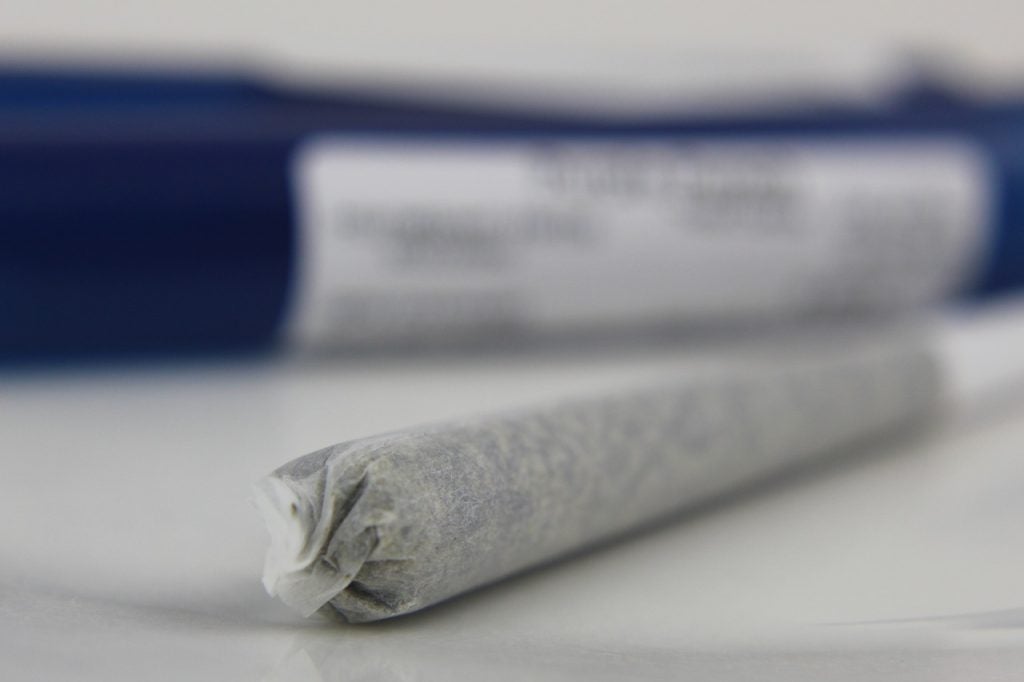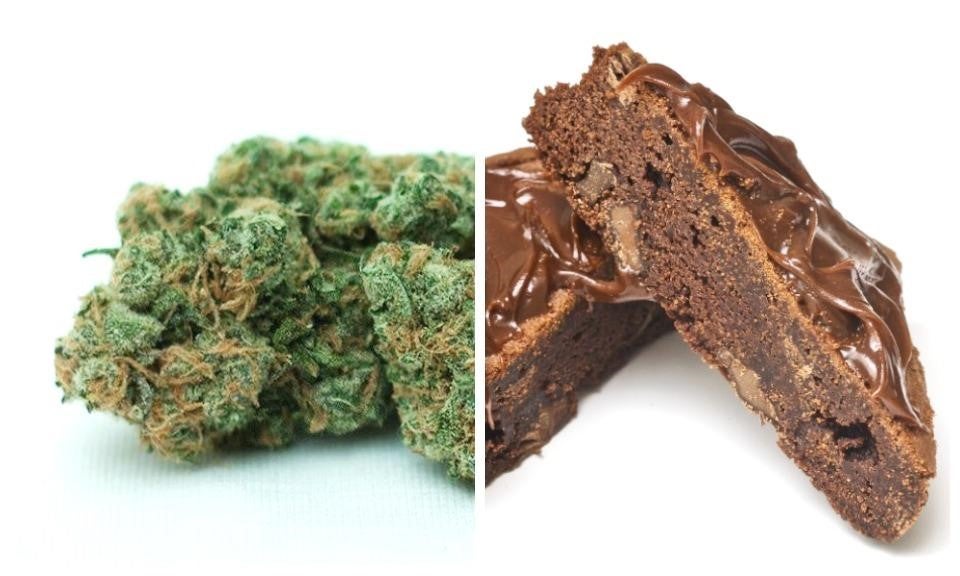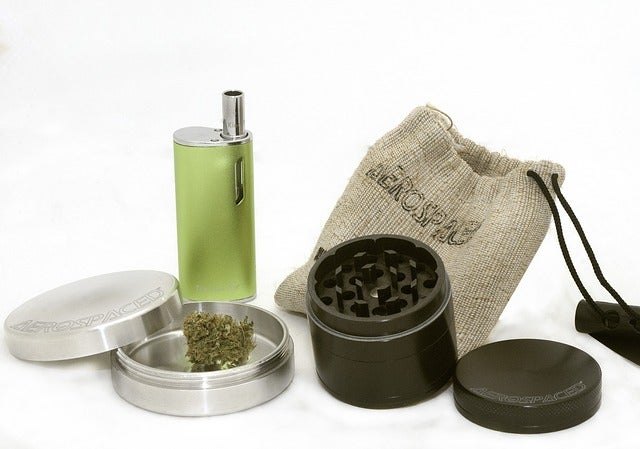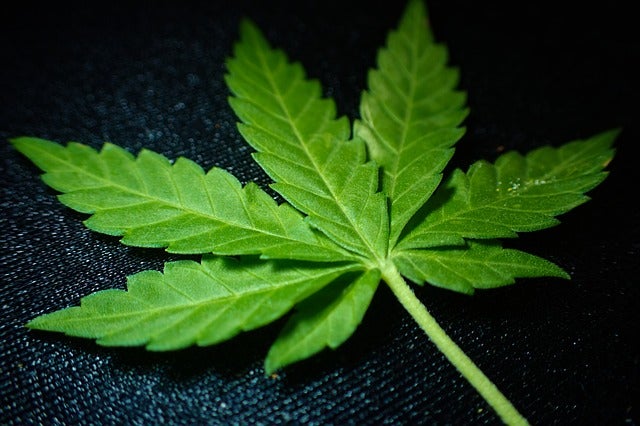Table of Contents
- 4 Different Ways to Consume Cannabis
- Smoking Cannabis
- Eating Cannabis
- Vaping Cannabis
- Dabbing Concentrates
- Topical Use of Cannabis
- Conclusion
When it comes to cannabis consumption, the most crucial consideration is the flower. A close second, though, is the way that you ingest cannabis. While smoking is the most popular way to consume cannabis, there are various ways to consume it.
There are three primary ways to consume cannabis: smoking/vaping, eating, and topical. Each method has distinctive characteristics that come with a unique set of pros and cons. Read the article below for an overview of the best ways to consume cannabis and the associated benefits and risks.
4 Different Ways to Consume Cannabis
Smoking Cannabis

Smoking cannabis is the most direct and quickest way to consume cannabis. Most of the cannabinoids in the pot enter the lungs and then the bloodstream. People who smoke weed will be able to feel the effects almost instantaneously.
Generally, the effects reach their apex within 30 minutes of inhalation. There is then a gradual diminishing process that typically takes one to three hours. While the process of vaping is similar, it has different effects, which is why we have reserved a section all its own about it further below. Looking for more potent effects? Learn how to smoke hash in a joint for a bolstered experience.
The immediacy of smoking can be a significant therapeutic benefit for people suffering from chronic pain. Furthermore, blunts make it easy to measure the dosage and rate of consumption for the user. That said, smoking comes with the risk of carcinogens, which make it an unfavourable option for people with certain health conditions, such as asthma.
There is no perfect method on how to smoke weed. That is why there are a plethora of options available today. Rolling papers are arguably the most popular method. Users roll the cannabis inside the paper before lighting it and can opt for specific flavourings.
Hand pipes and water pipes are among the most common ways to smoke weed. The former provides a convenient and portable vessel that offers equal amounts of functionality and artistic expression. Water pipes, often called bongs, tend to be larger and are generally reserved for home use, though they do provide supposed health benefits. We have a large selection of cannabis strains available for your smoking pleasure.
Beyond that, many people enjoy smoking weed with hookahs. The large devices come with flexible piping that makes hookah smoking a popular communal experience. For the creators and innovators in the world, there are one-time use devices where people transform items, such as apples, into homemade pipes.
Pros:
- Users have maximum control of strain and potency
- Effects are quick to appear
Cons:
- Smoking involves the inhalation of carcinogenic compounds
Eating Cannabis

Oral ingestion is arguably the second most common form of cannabis consumption. The process of eating provides a slower release of the cannabinoids, though effects get heightened and last for longer than vaping or smoking. Generally, people will feel the impact within fifteen minutes to two hours, depending on whether they’ve eaten recently.
Edible cannabis typically lasts for four to six hours. It is possible to have doses that can remain effective for up to 24 hours, though. The long-lasting effects have made it a popular medicinal form for patients that do not need immediate relief from pain.
One of the reasons for the delayed onset is because of what takes place during the digestion process. The body must meticulously break down the compounds, which results in a chemical transformation. During this evolution, the compounds become stronger, leading to more potent effects.
There are many avenues on how to eat weed. As long as the food has some fat content, you can add marijuana to it. The only limit is the imagination. Some of the most popular weed-infused foods include brownies, ice cream, mints, chocolate, pizza, snacks, and soda.
Check out our cannabis infused brownie recipe here.
Alternative methods for consuming cannabis include tinctures, capsules, and oils. Tinctures are a liquid form of cannabis that provides precise dosage and immediate effects. The liquid often contains alcohol as the solvent, though other fat-soluble materials will do.
People that use tinctures should apply three or four drops on the tongue for a full dose. From there, the body absorbs and digests the contents. If you opt for edible cannabis, know that the stomach will immediately absorb the compounds, but the processing of the liver is what impacts potency.
Pros:
- Effects last longer than other forms of consumption
- Discrete and convenient
Cons:
- Vulnerable to improper storage
- Delayed effects can lead to overconsumption
Vaping Cannabis

Vaporization works in the same way as smoking. The user inhales the marijuana so that the cannabinoids can make their way into the bloodstream. The critical difference is that vaping cannabis does not require the user to burn the plant.
Instead, the vaporizer heats the flower to a specific temperature, which in turn releases the active ingredients in the cannabis. The vapour the flower emits is what the user inhales. This separation from the burning process makes vaporizing a healthier option than smoking because it eliminates potential irritants to the throat.
That said, there is little research on the health implications of the act of vaporizing cannabis. (The same goes for smoking marijuana too.) Furthermore, there have not been thorough safety regulations put in place for many of the oil-based vaporizers.
The issue of safety is imperative because cannabis flowers can contain anywhere five to 20 percent THC, which is the psychoactive ingredient. Vaporizing oils, however, can have levels up to 80 percent. Therefore, vaping may be overwhelming for beginning smokers.
The vaporizer is similar in size to a cigarette, though it is often plastic or metal. The small and sleek technology makes the product highly convenient to use and portable. As the market for vaporizers continues to expand, the elements within them are evolving too.
While there are many more components, vaping boils down to the tank, atomizer, sensors, and battery. The tank is what holds the cannabis near the mouthpiece. It can be a single-use or a refillable cartridge.
The atomizer is the heart and soul of the tool as it creates the heat to release the vapours. Sensors and software can toggle the heating elements depending on whether the user wants to inhale. Finally, the battery provides the power to ensure the process goes off seamlessly.
Pros:
- Effects are quick to appear
- Discrete and convenient
- No odour
Cons:
- Effects are weakened
- Comes with the same health risks as smoking
Dabbing Concentrates
Another popular way to consume cannabis is dabbing. What is dabbing? Well, you can think of it as a concentrated dose of cannabis.
Manufacturers produce dabs by removing the THC and other cannabinoids with a solvent. The result is sticky oil that they heat and then inhale. Dabs have been around for approximately a decade as a way to get higher more efficiently.
The high concentration levels of THC make dabbing one of the fastest-acting methods for getting high. Of course, this efficiency comes with the risk of overconsumption as well as contamination. If you opt to have dabs, make sure the product has laboratory testing, high-grade solvents, and trained professionals performing the extraction.
Topical Use of Cannabis

Topicals involve the infusion of cannabinoids through the skin via lotions, bath salts, and oils. Because the user direct applies the balm to their skin, the topical can provide localized relief from pain, inflammation, or aching. These applications are non-intoxicating, so they are ideal for people looking for therapeutic relief.
The primary reason topicals are so effective is their ability to dissolve in water. Once the body absorbs the cannabis-infused lotion, oil, or spray, the cannabinoids bind to a network of receptors called CB2. This interaction is how cannabinoids provide relief.
Topicals are particularly popular among the elderly as well as sick or injured individuals. For instance, a senior user may use the product to combat arthritis. The effects begin to set in anywhere from five minutes to two hours and can last for up to half a day.
Stronger versions of topicals do exist in patch form. Some individuals report using patches that last for two days. With patches, a negligible amount of cannabinoids enters the bloodstream and brain, which means people will not have psychoactive experiences.
As the topical use of cannabis continues to grow, so do the number of products. This is also your only option for at least 24 hours to take cannabis after you’ve had a tooth pulled.
Pros:
- Discrete and odourless
- Lasts up to 12 hours
- Targets specific pain with psychoactive effects
Cons:
- May irritate the skin depending on the user
Conclusion
There are many ways to consume countless strains of cannabis. Each method has distinct pros and cons that can vary depending on your preferences for convenience, potency, and the duration of the high. For instance, smoking cannabis provides an immediate effect, while edibles are slow acting.
Remember, not all forms of cannabis will provide a head or body high. Topicals minimize the psychoactive impact of THC so that users can reap the medicinal benefits. Additional types of consumption include tinctures, vaping, and dabbing.
No matter the method you select, make sure to consume it responsibly. Side effects can include impaired body movement, difficulty problem solving, altered moods, and delusions. If you are starting as a cannabis consumer, we recommend you do it with responsible friends or family members as a way to monitor potentially high doses.
Check out our Kootenay Dispensary for all of your cannabis needs!




Recent Comments